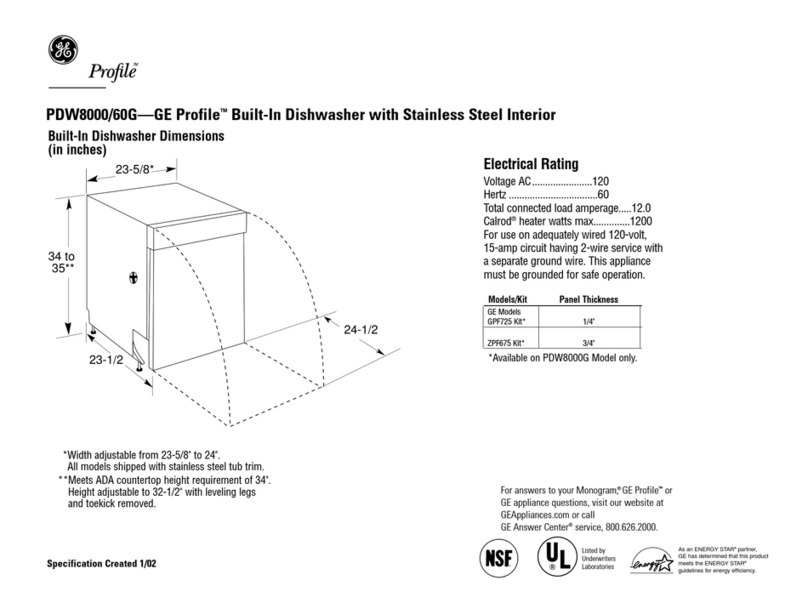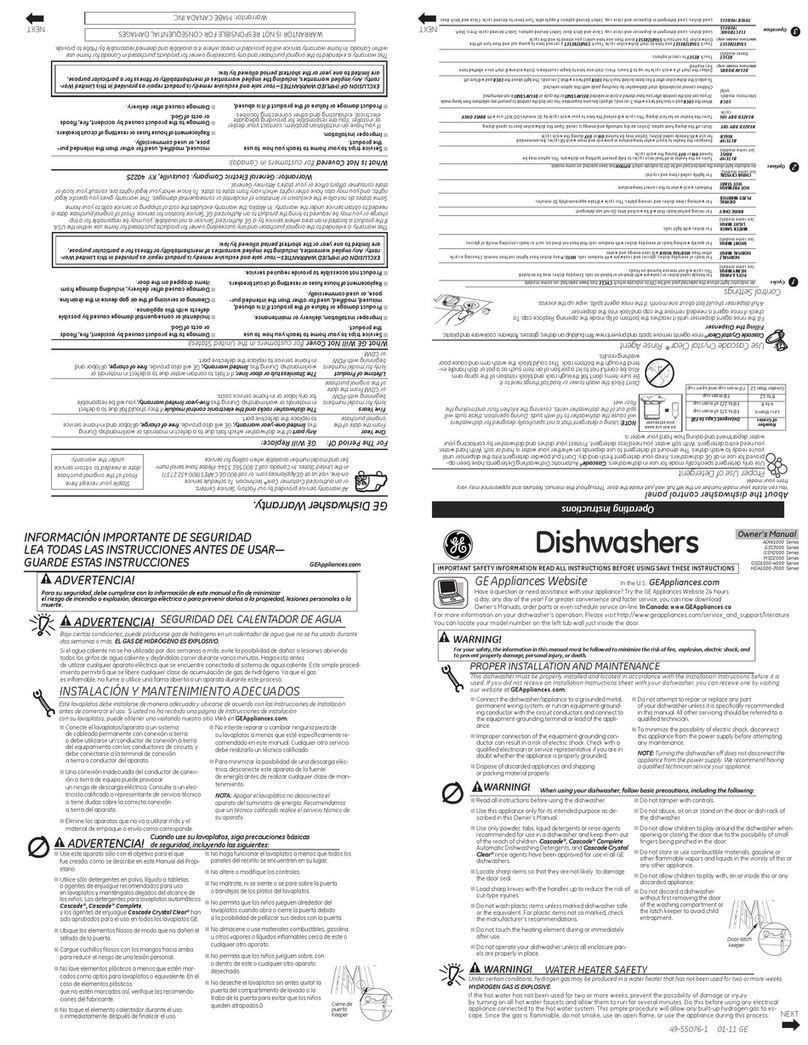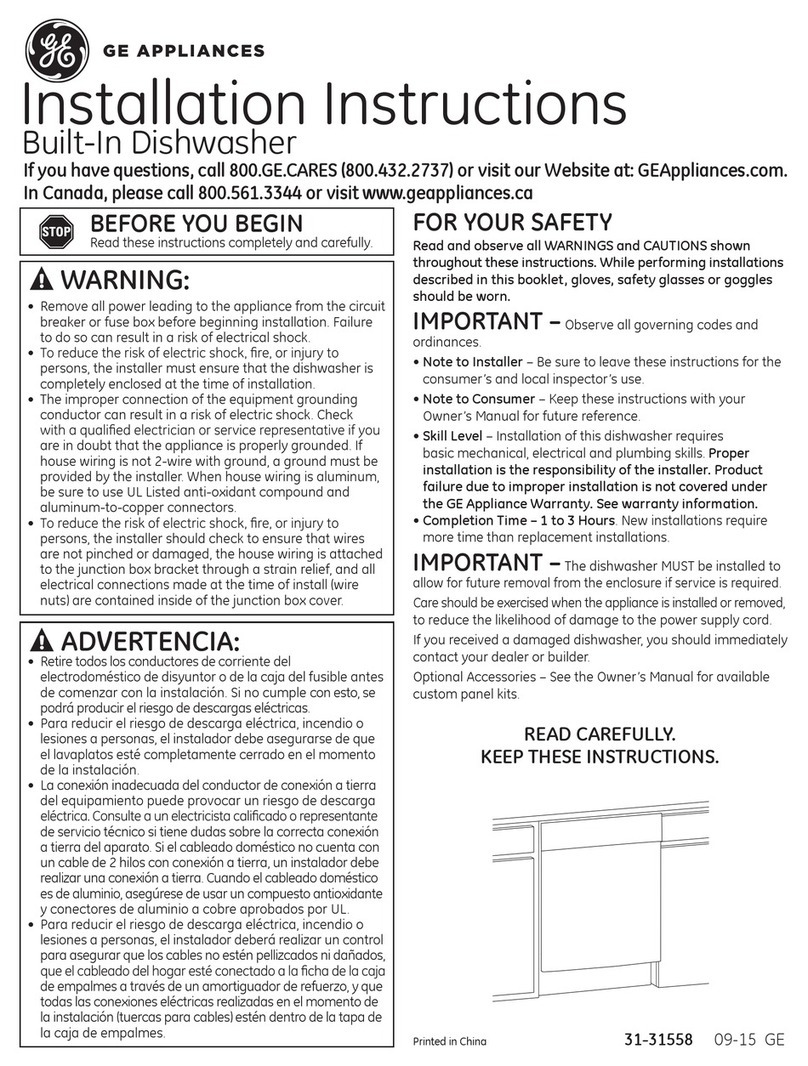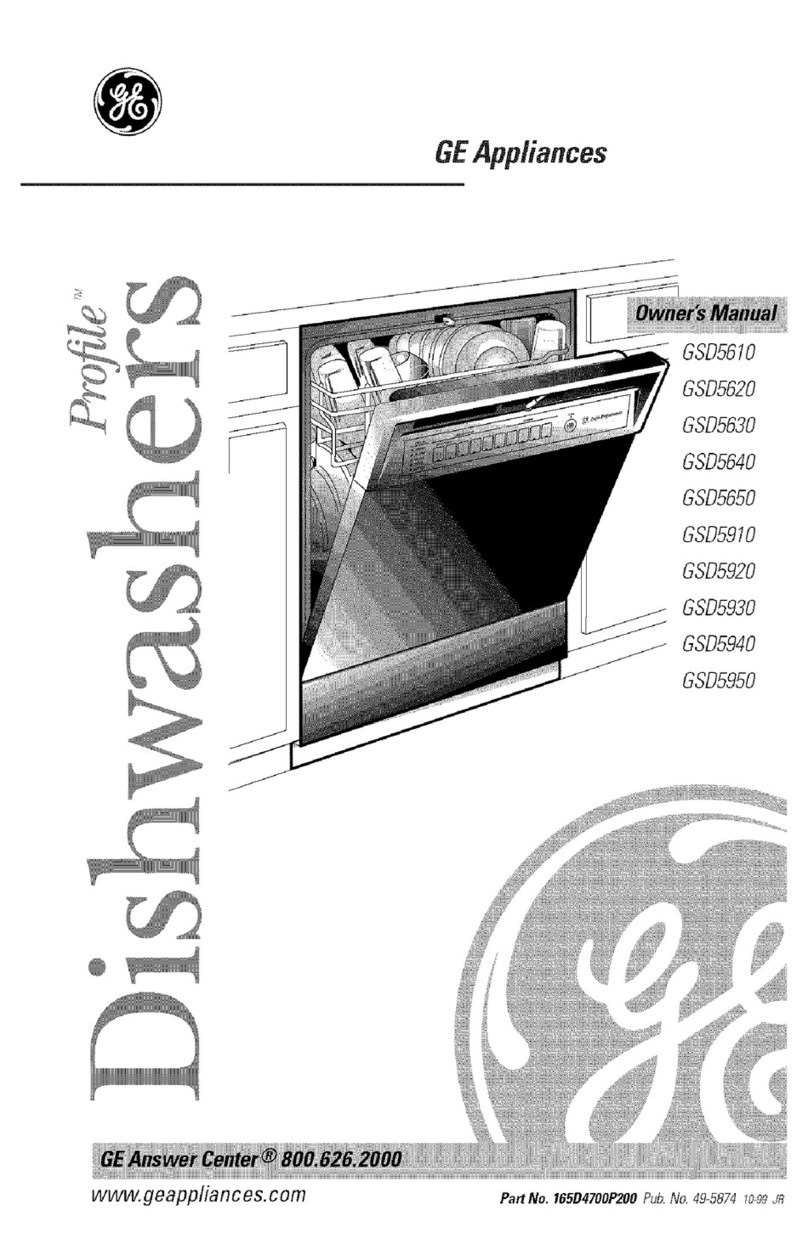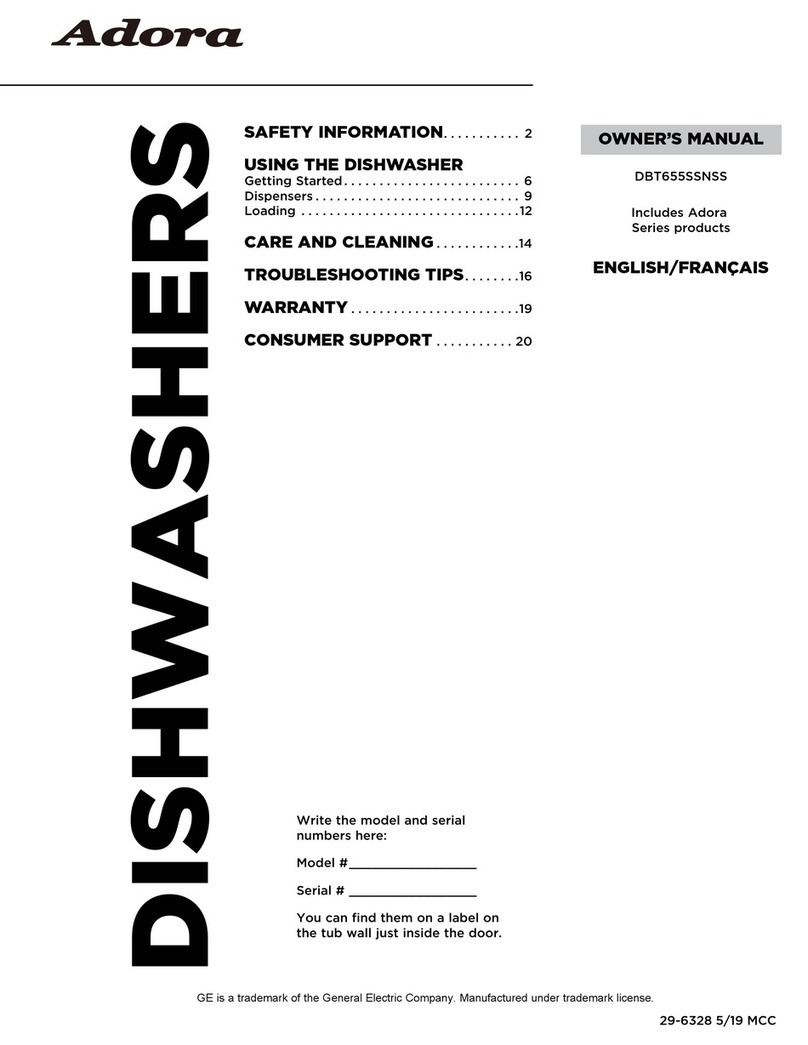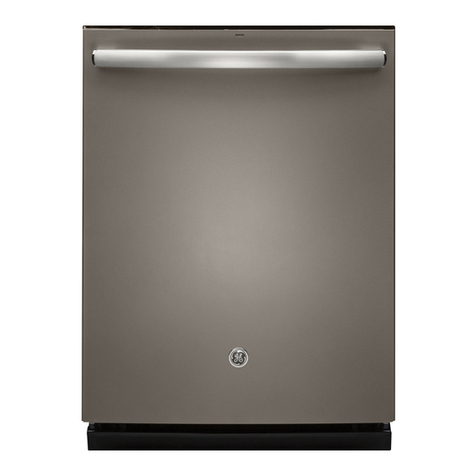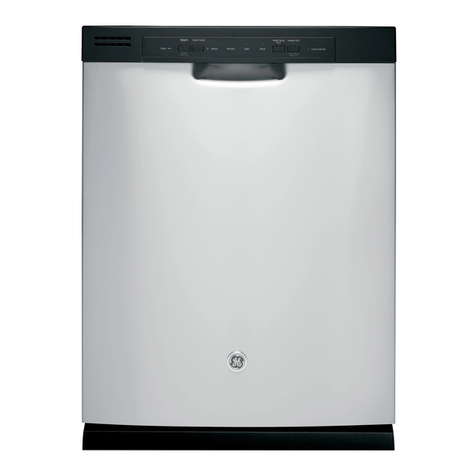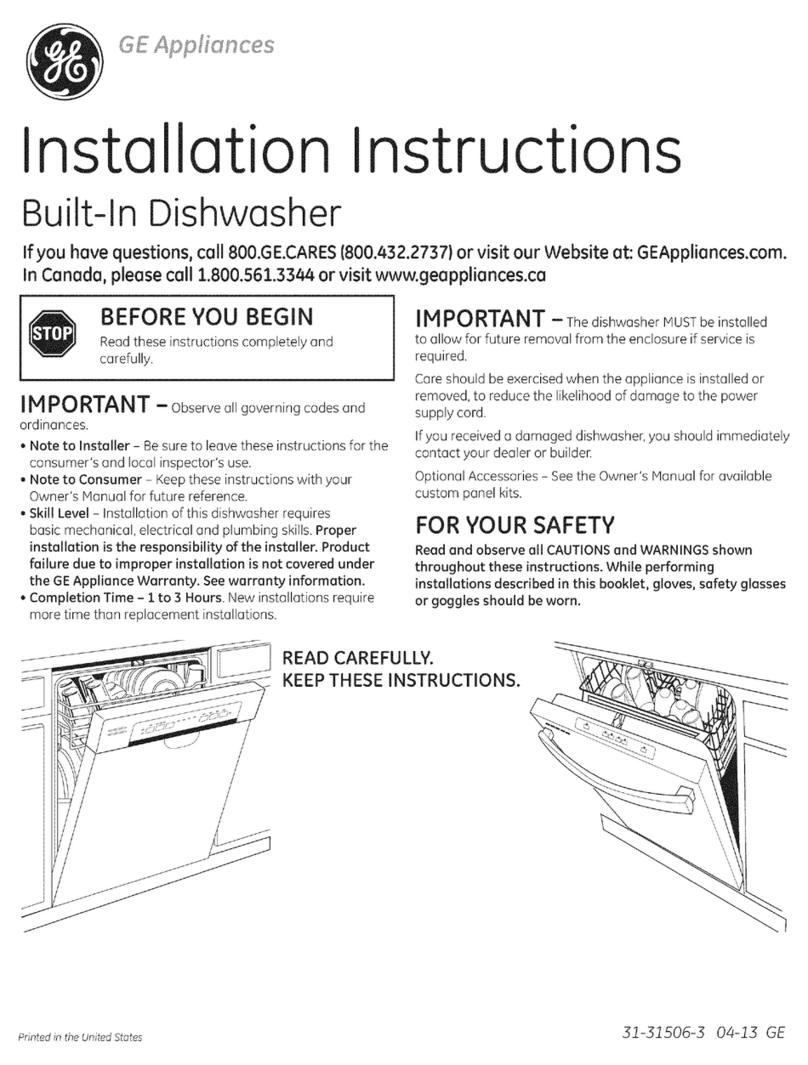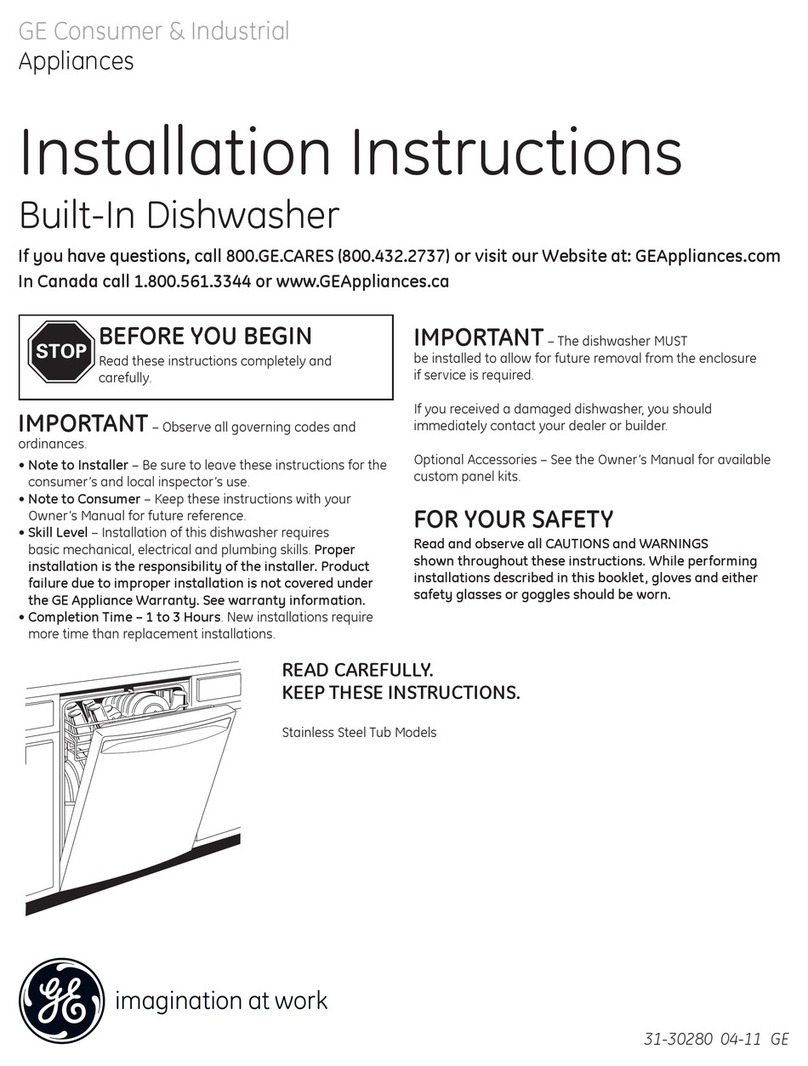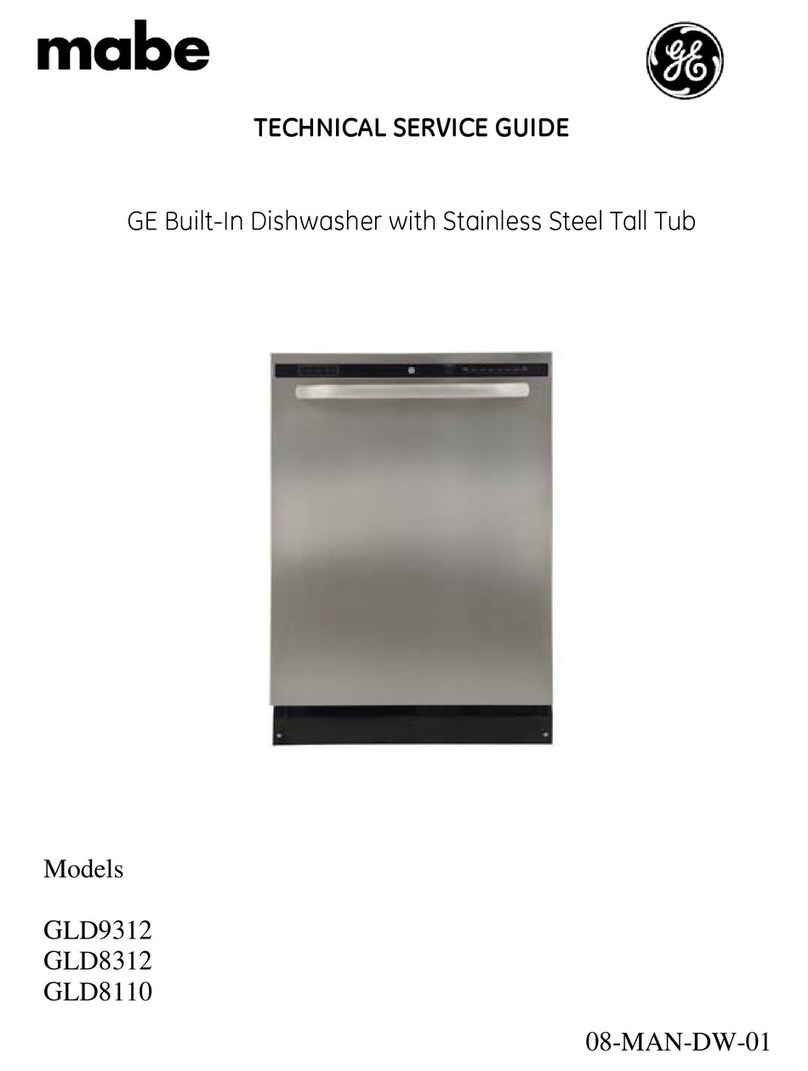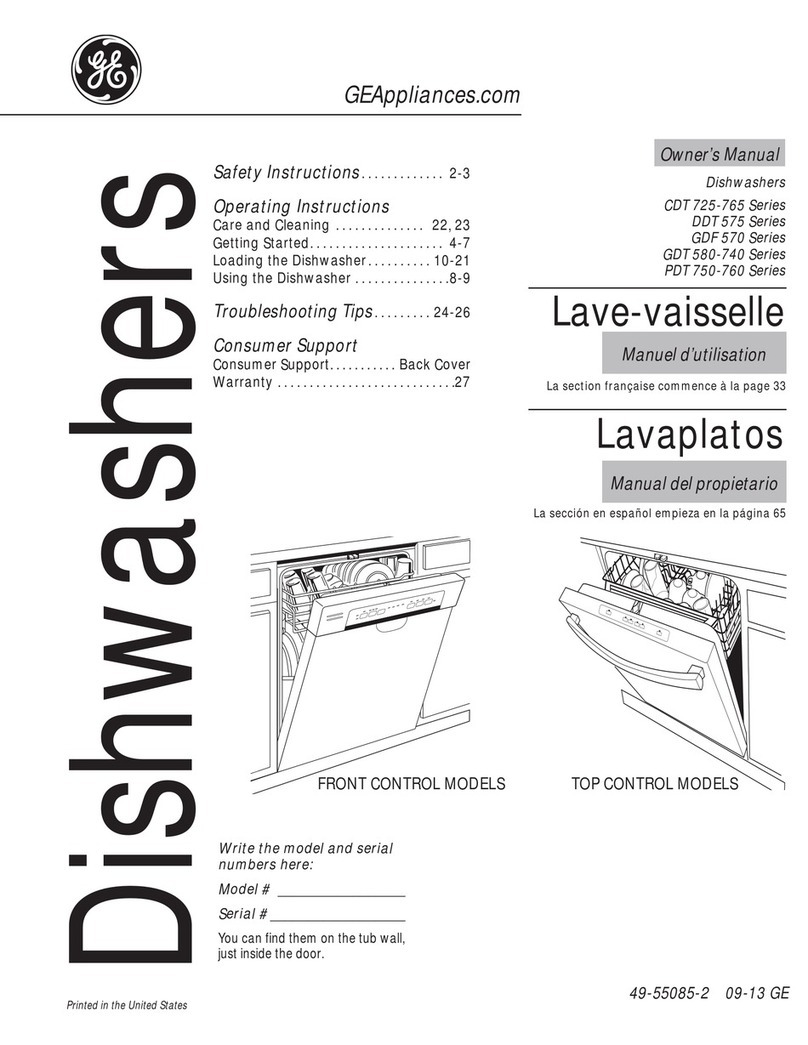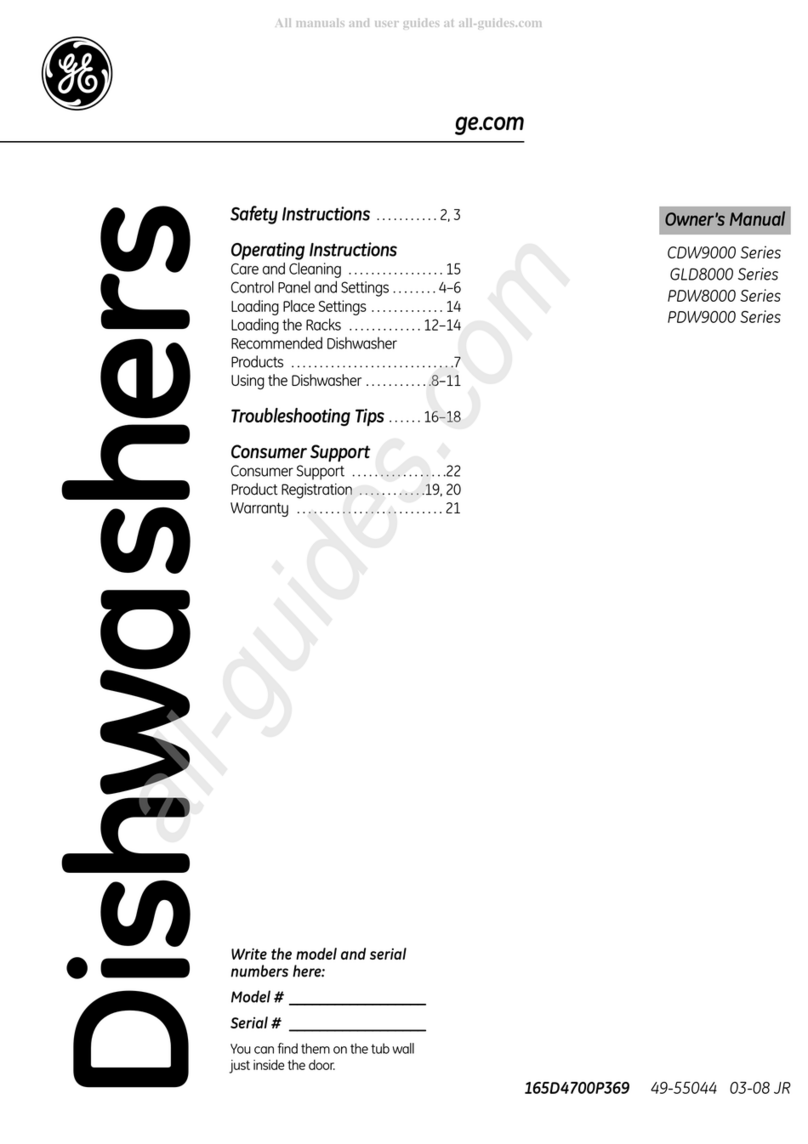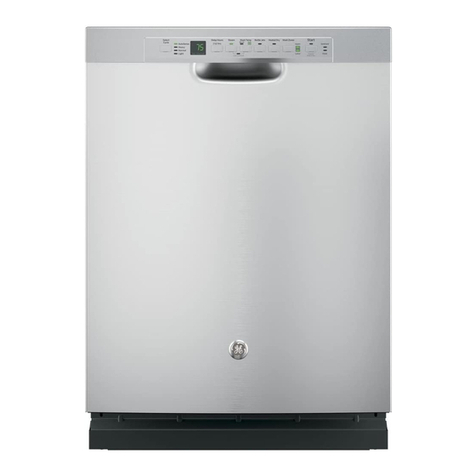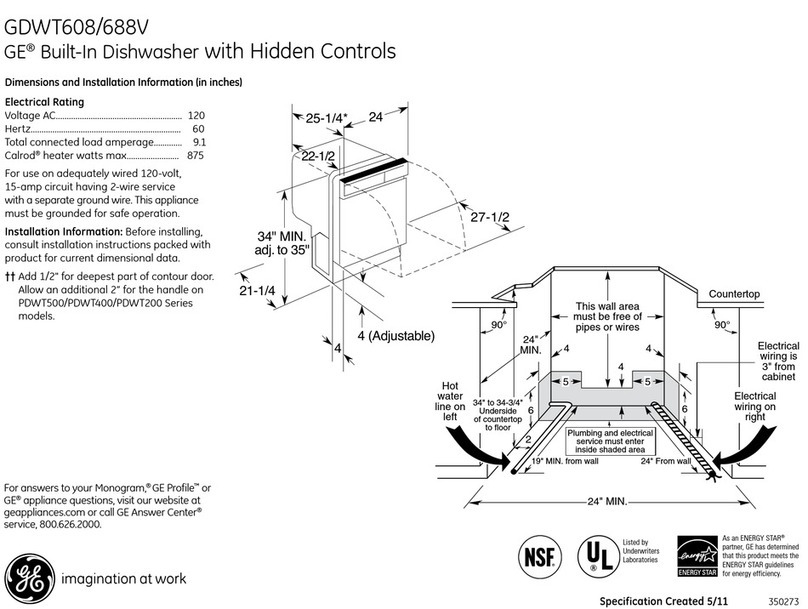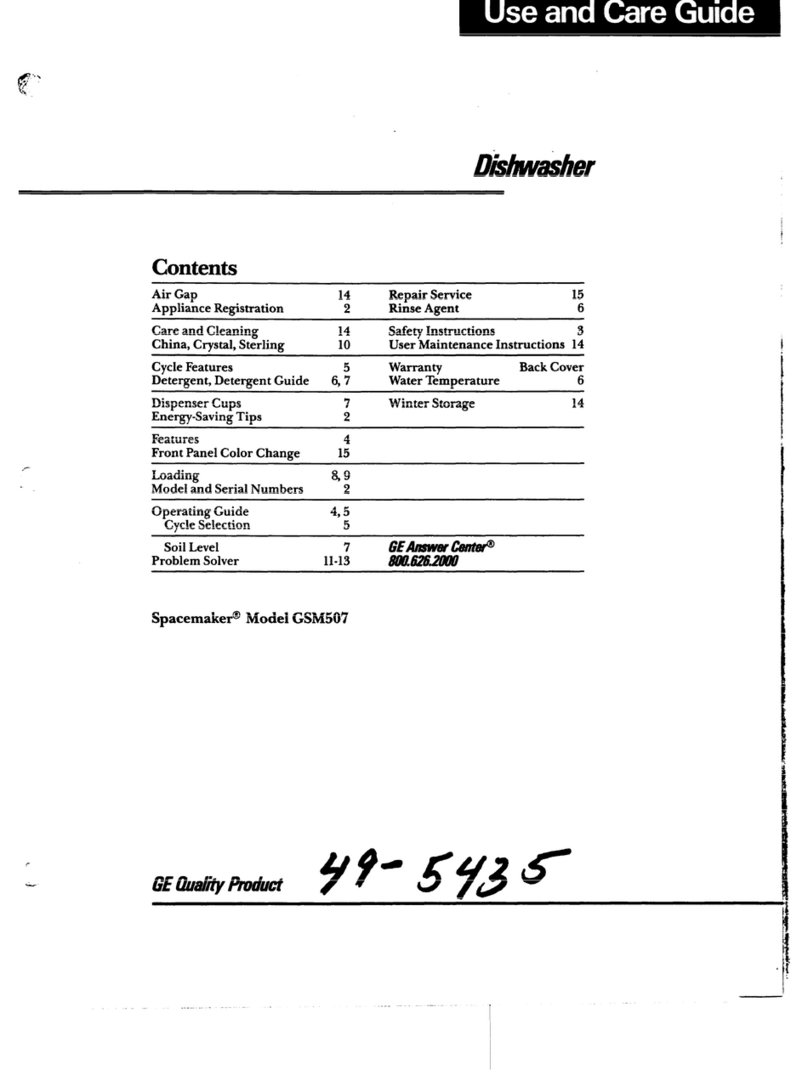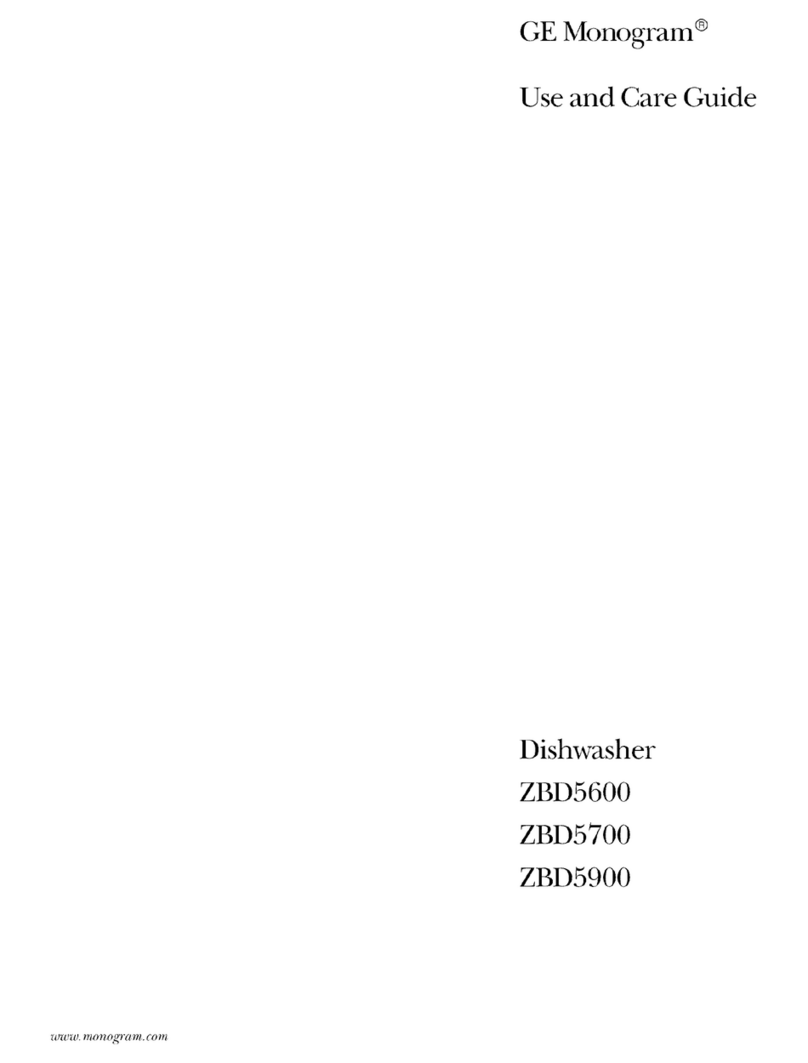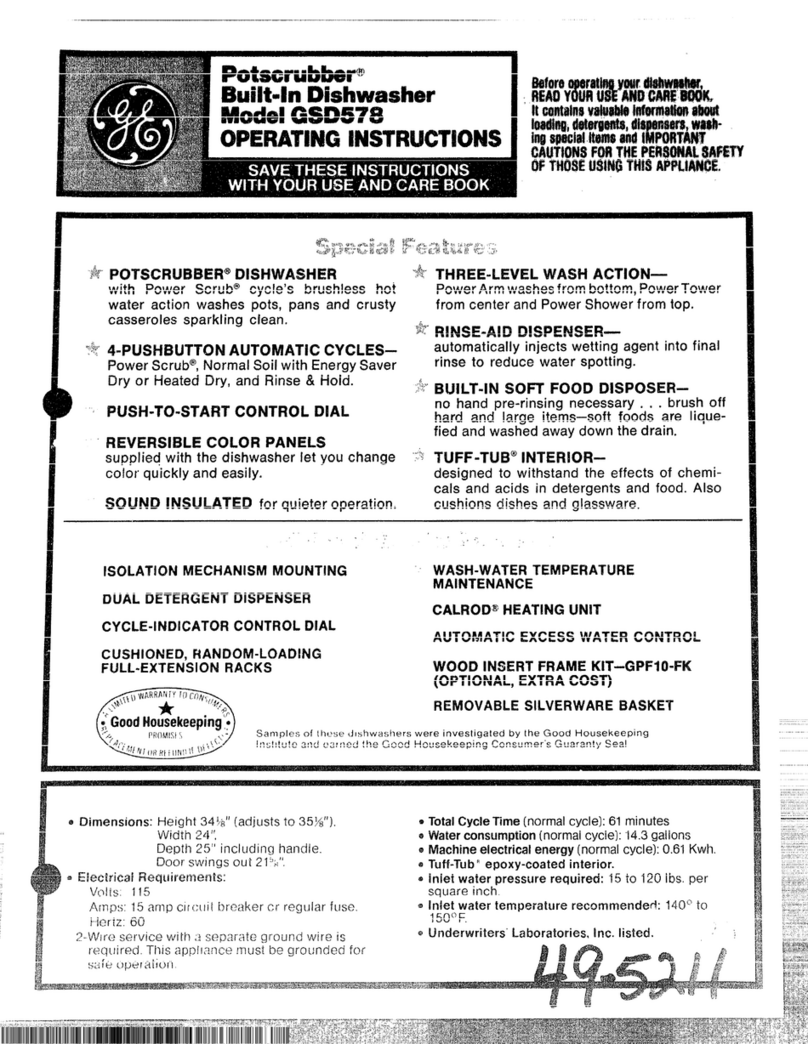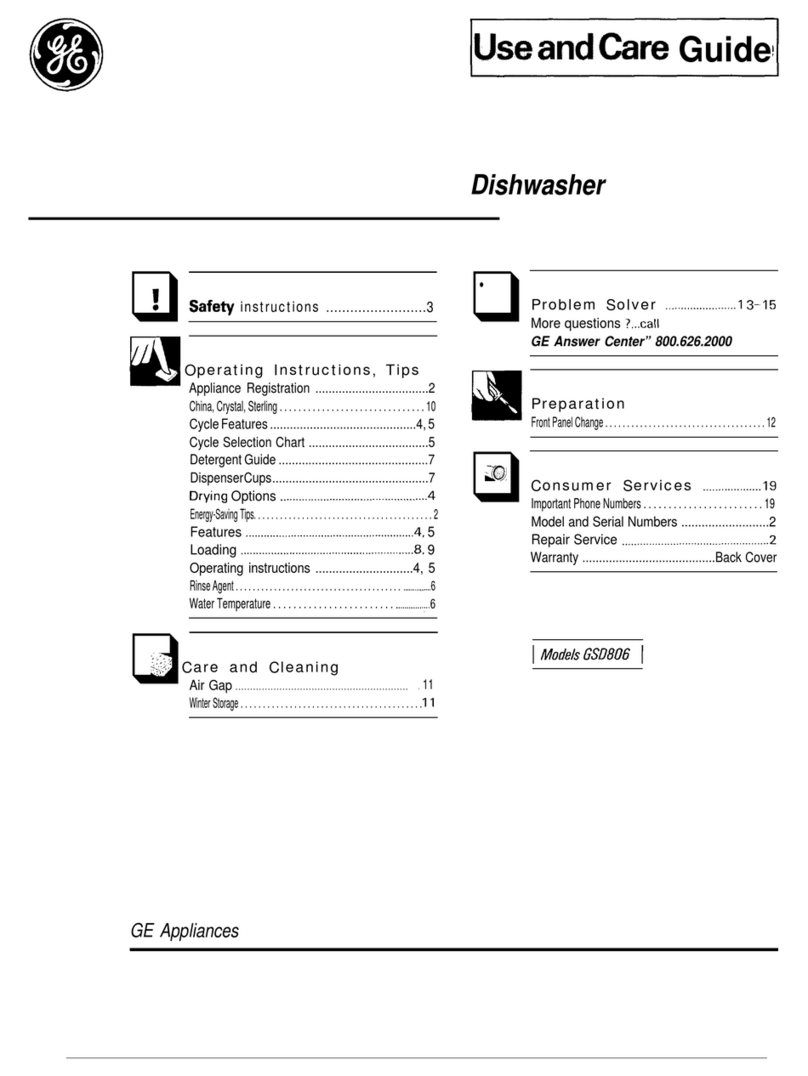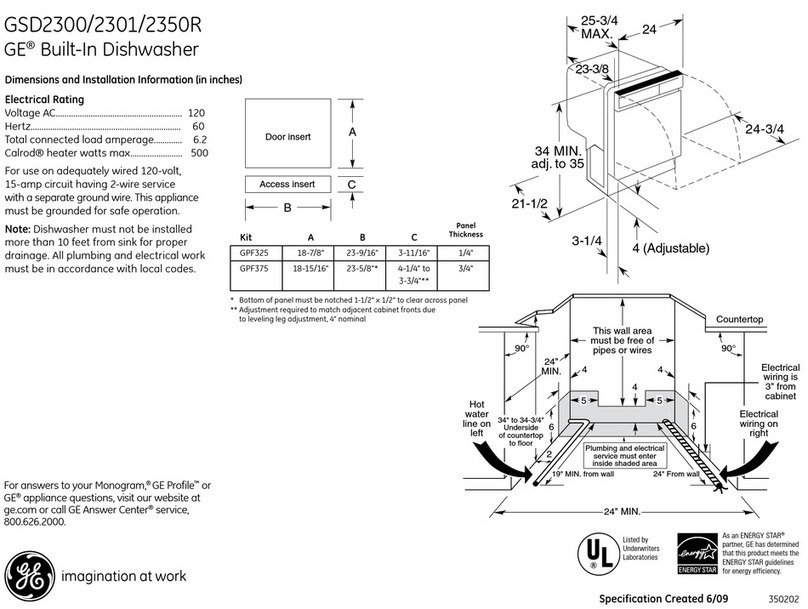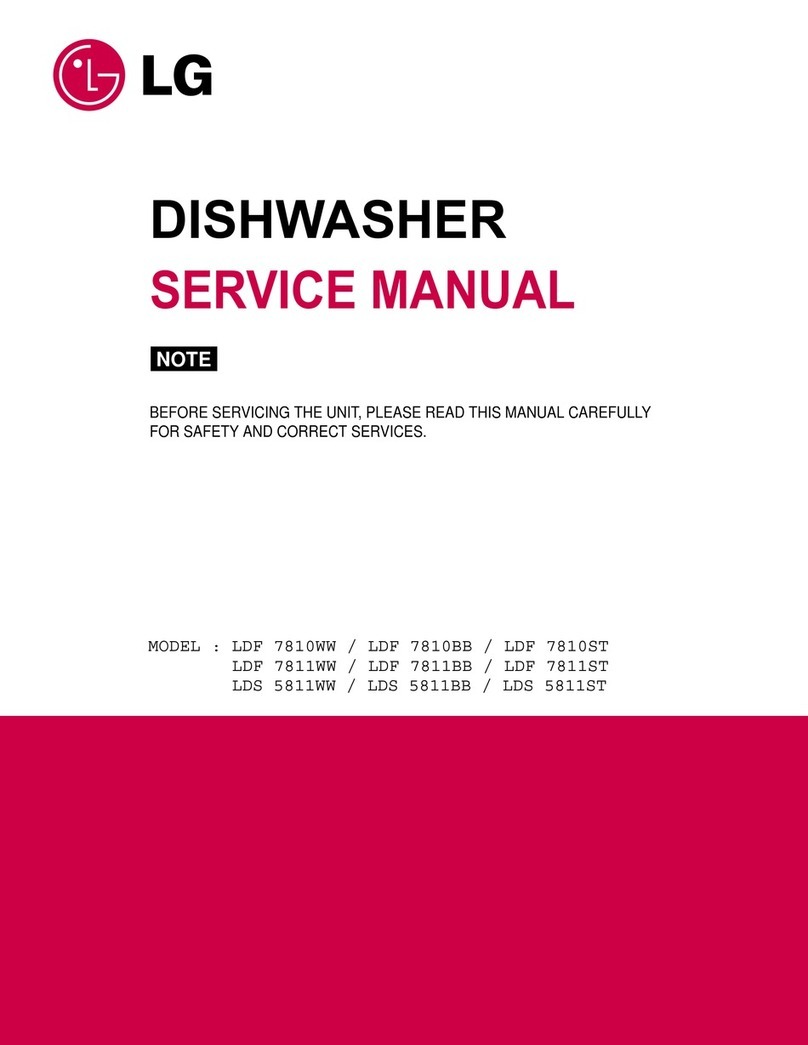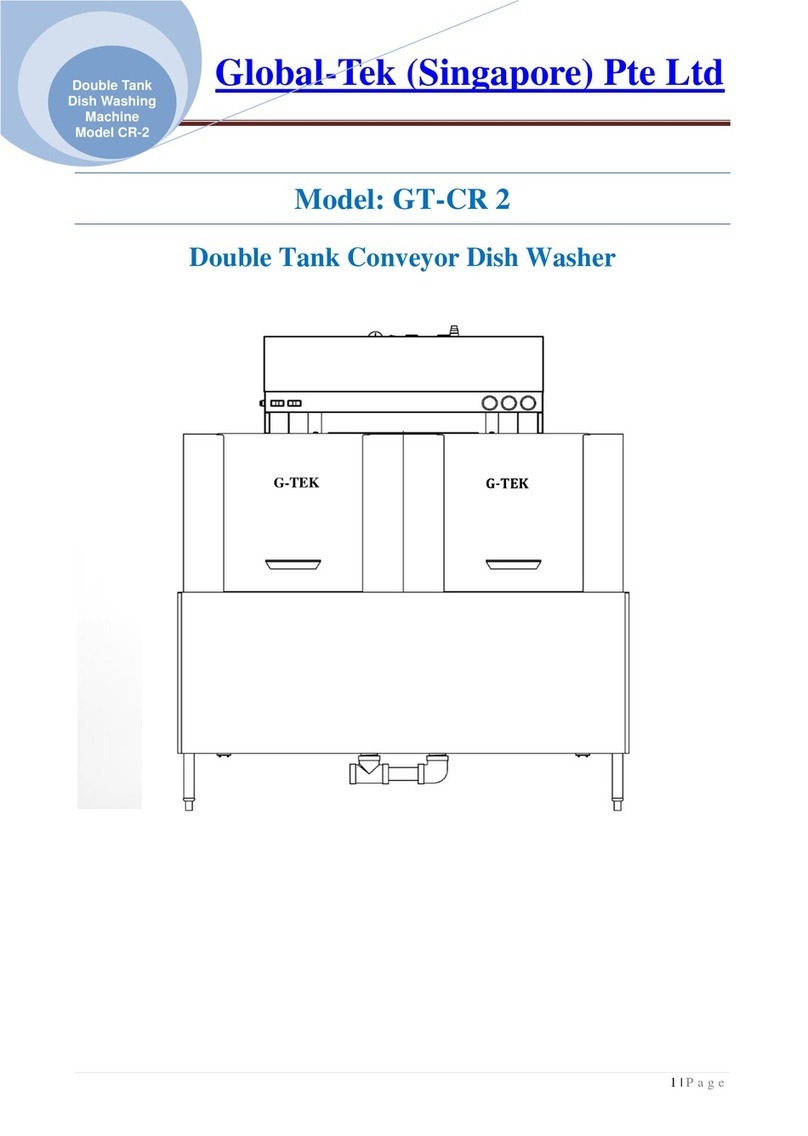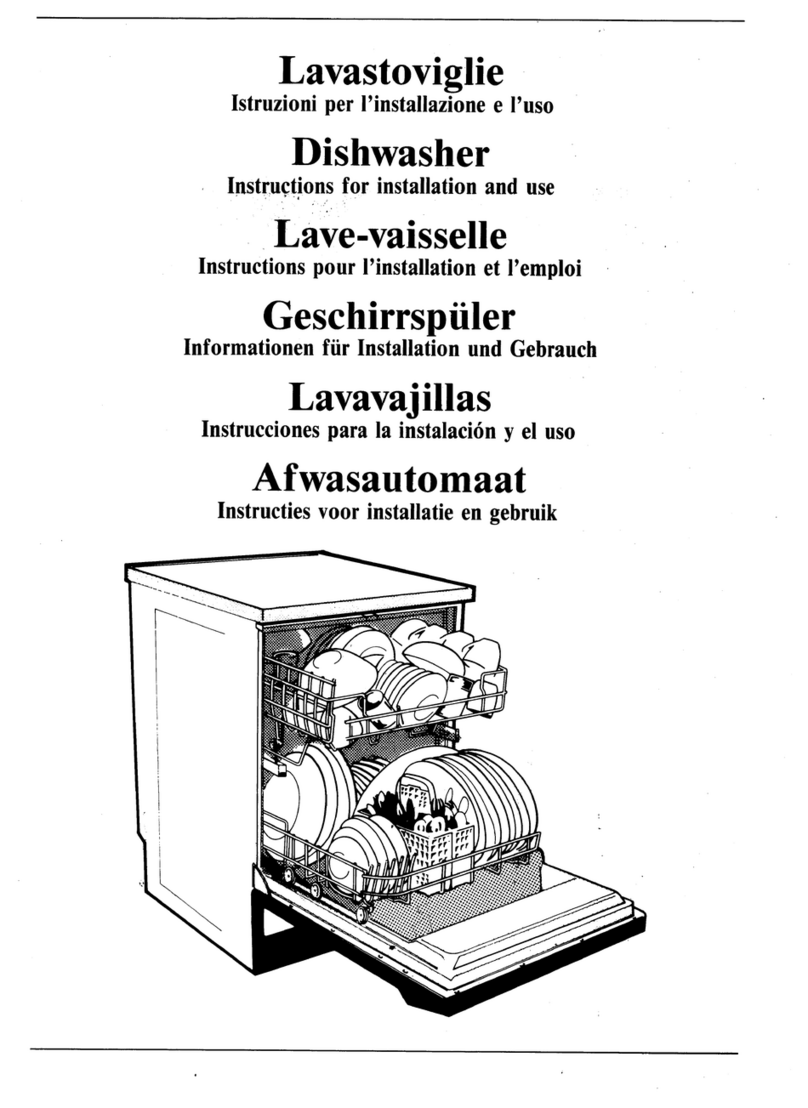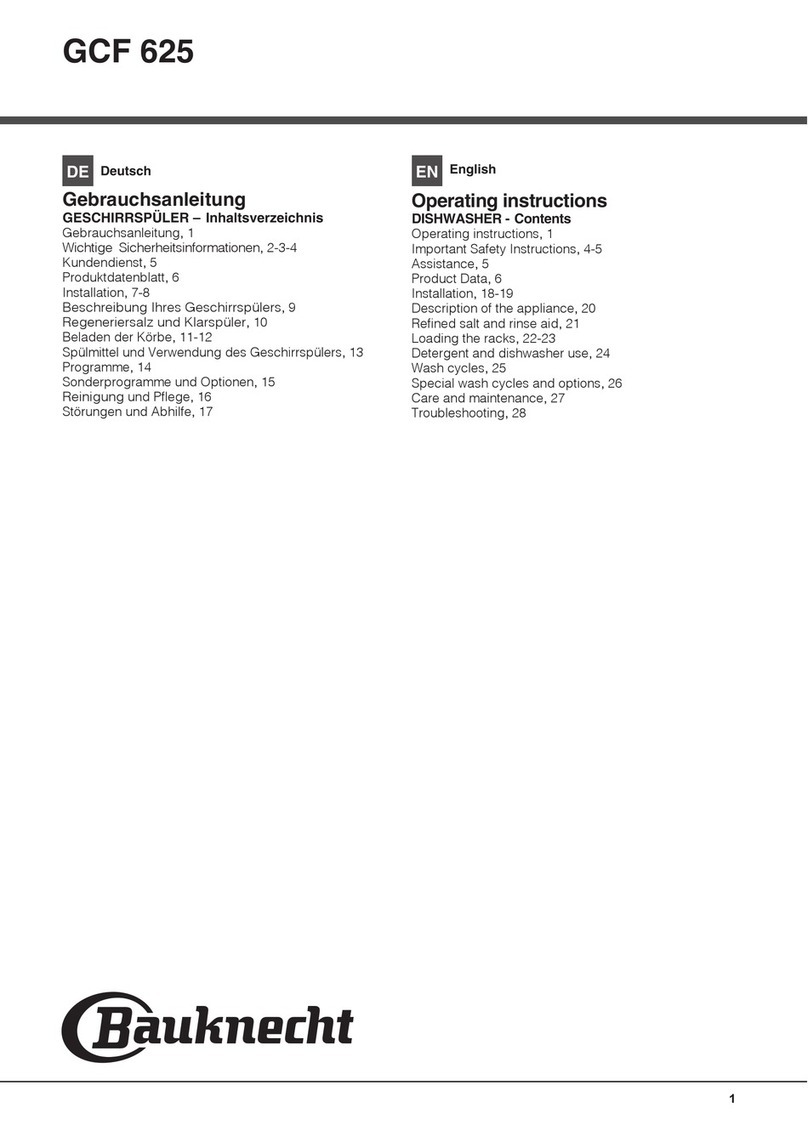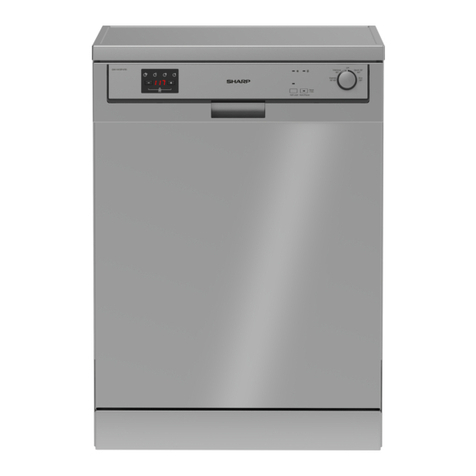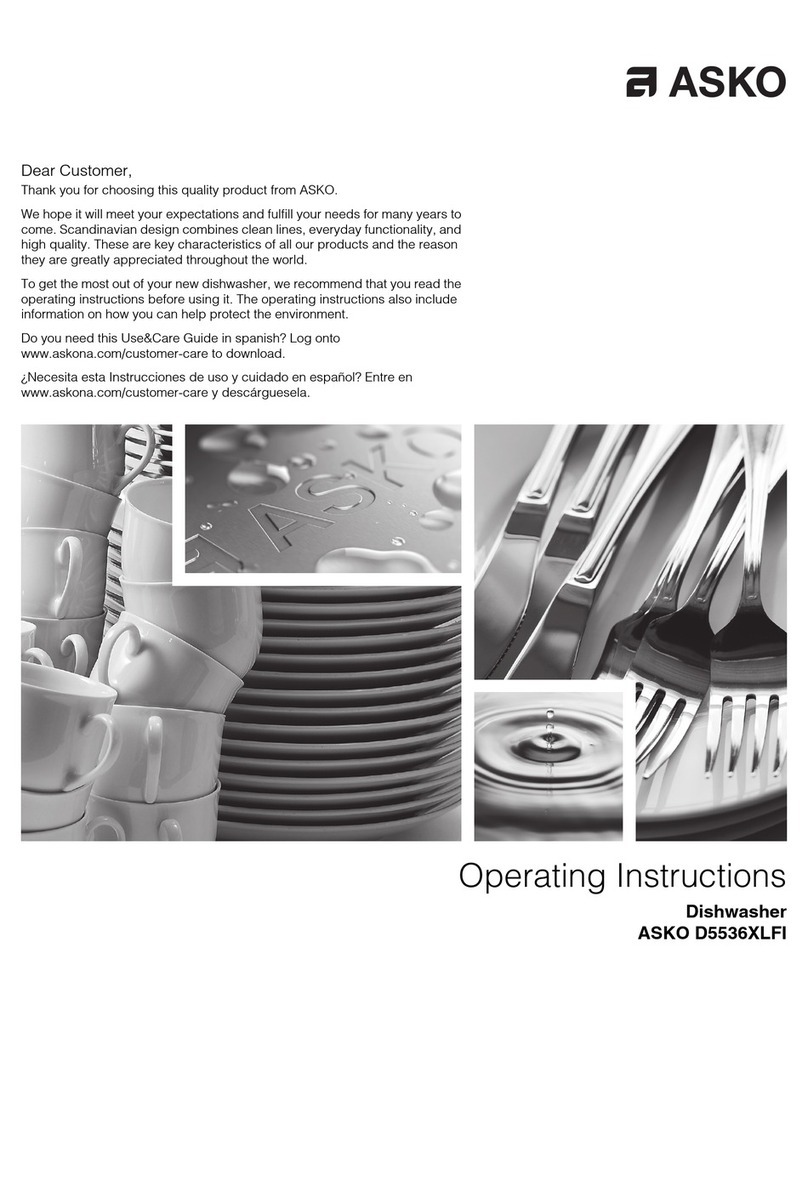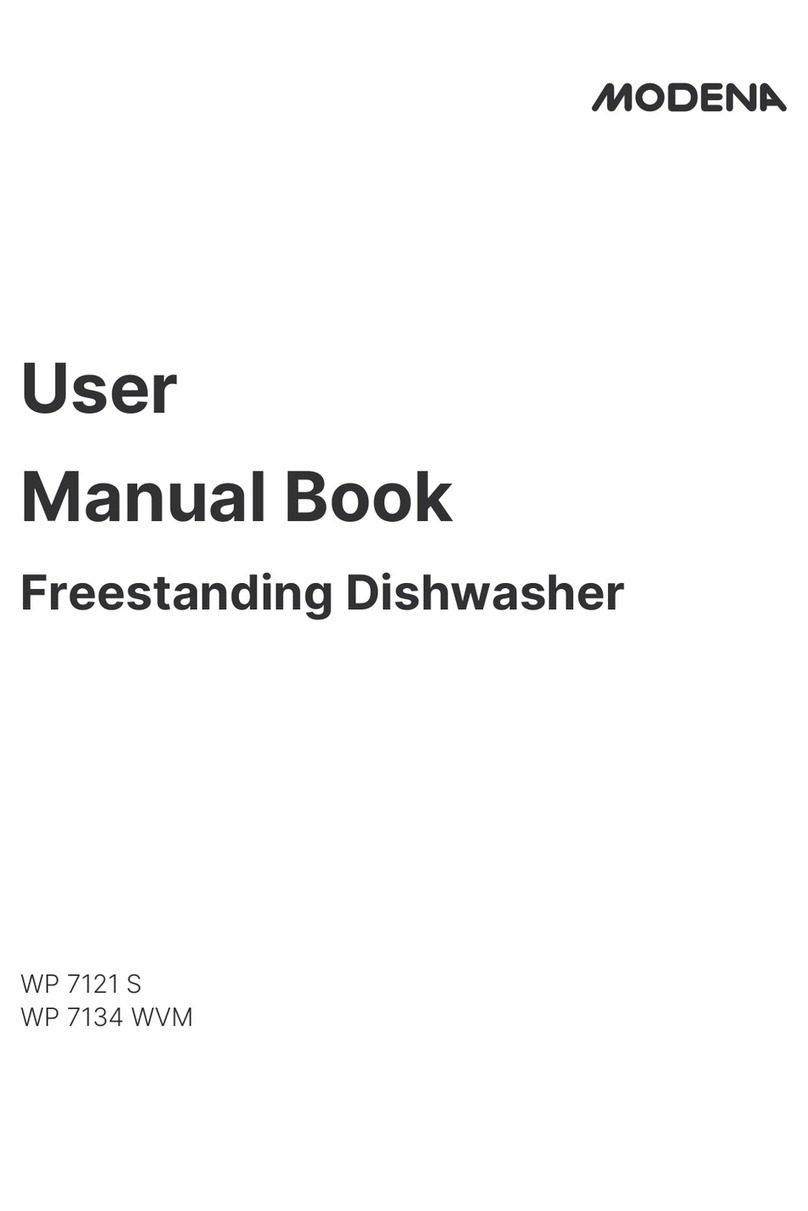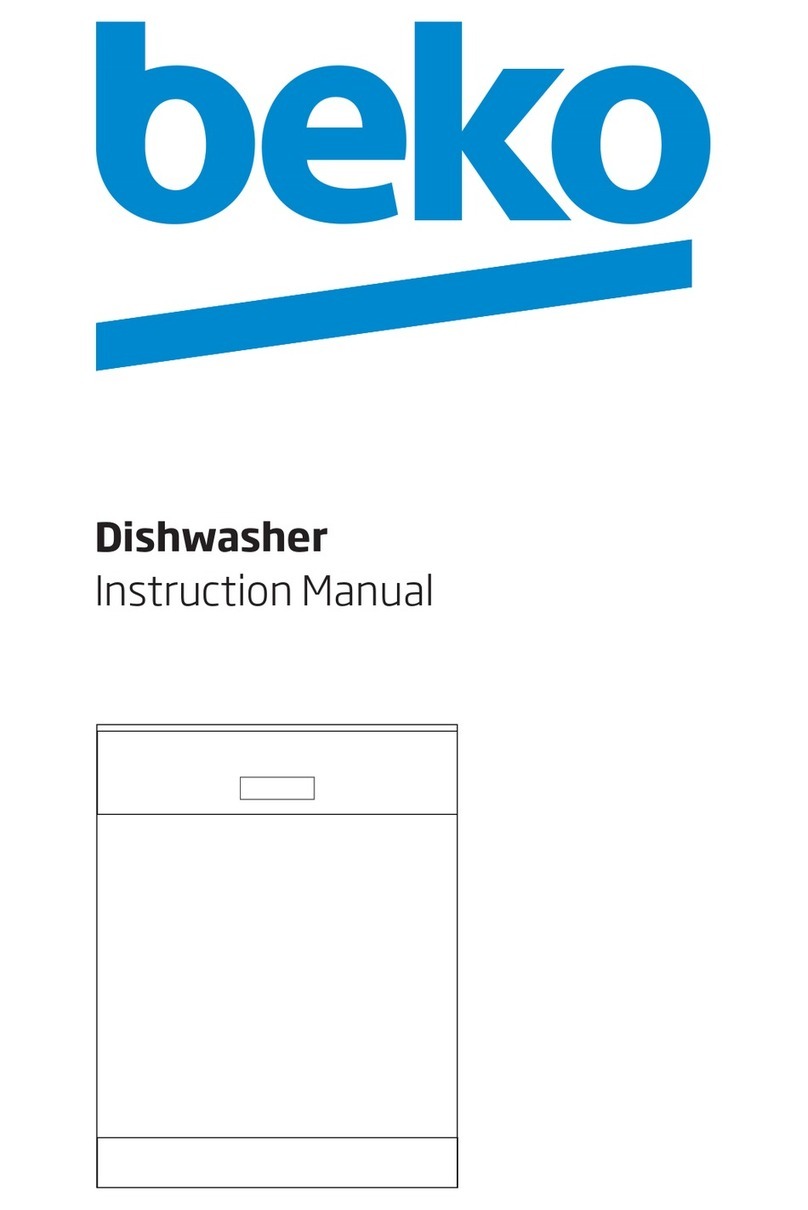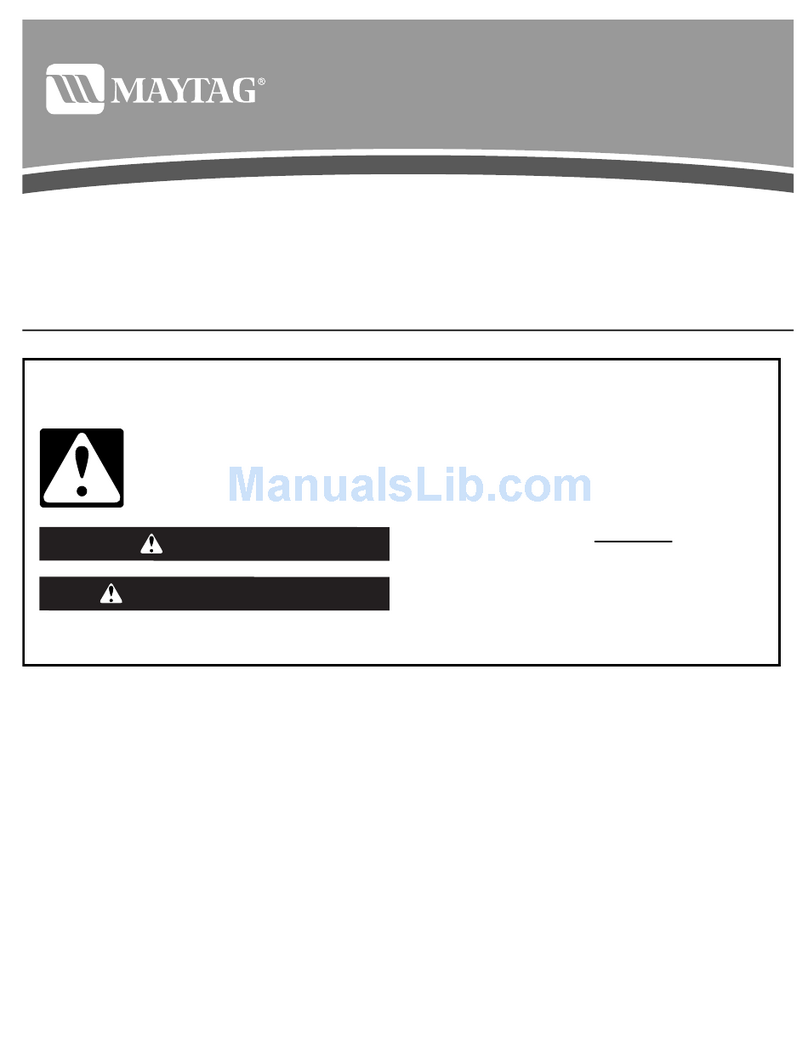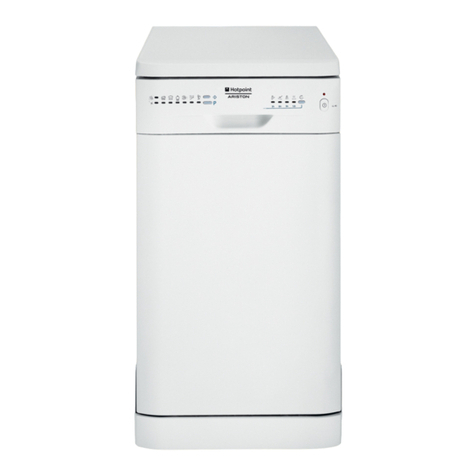mmpemtmSen$orsystem
Togetdishescleananddryyou
needhotwater.TOhelpyouget
waterofthepropertemperature,
yourdishwasherhasawaterheating
featurethatautomaticallysenses
thetemperatureofthewaterinthe
washcycleandheatsit,ifnecessary,
tothepropertemperature.This
waterheatingfeaturemayallow
youtoturndownyourhousehold
waterheaterandsaveenergyif
you’rewillingtoletthedishwasher
runalittlelongerwhileitheats
watertothepropertemperature.
Forgoodwashinganddrying,the
enteringwatermustbeat least
120”F.Topreventdishdamage,
inletwatershouldnotexceed150°F.
How to test watertemperature:
Checkthewatertemperature
insideyourdishwasherwitha
candyor meatthermometer.
Letthedishwasherrunthrough
onefillandpumpoutcycle,then
letthedishwasherfillwithwater
thesecondtime.
Whenyouhearthewaterstop
filling,unlatchthedoorandslowly
openit.
Measurethetemperatureofthewater
inthebottomofthetubthisway:
Removethesilverwarebasketand
placeacandyor meatthermometer
inthe watertowardsthemiddleof
thetub.If thetemperatureis less
than 120°F,youwillnotgetgood
washingresults.Higherwater
temperatureisneededtodissolve
greaseandactivatepowderdetergents.
Helpfulhints:Ifoutside
temperaturesareunusuallylow,or
ifyourwatertravelsalongdistance
fromwaterheatertodishwasher,
youmayneedtosetyourwater
heater’sthermostatup.Ifyouhave
notusedhotwaterforsometime,
thewaterinthepipeswillbecold.
Tbrnonthehotwaterfaucetatthe
sinkandallowittorununtilthe
waterishot.Thenstartthe
dishwasher.Ifyou’verecentlydone
laundryor runhotwaterfor
showers,giveyourwaterheater
timetorecoverbeforeoperatingthe
dishwasher.
Toimprovewashabilityifthewater
islessthan120°Fandyoucannot
adjustyourwaterheater:Selecta
longercycleandfillbothdetergent
cupsatleasthalf-fi.dlwithdetergent.
Howtolust?arin$eagent.
Arinseagentmakeswaterflow
offdishesquickerthanusual.This
lessenswaterspottingandmakes
dryingfaster,too.
Forbestdishwashingperformance,
useofarinseagentsuchasJET-DRY
brandisrecommended.
Rinseagentscomeineitherliquid
or solidform.Yourdishwasher’s
dispenserusestheliquidform.
EIowto fill the rinseagent
dispenser. Unscrewthecap.Add
theliquidrinseagentuntilitjust
reachesthebottomofthelipinside
thedispenseropening.Replacethe
cap.Thedispenserautomatically
releasestherinseagentintothe
finalrinsewater.
If youaccidentally spill: Wipe
uptherinseagentwithadamp
cloth.Don’tleavethespillinthe
dishwasher.It cankeepyour
detergentfromworking.
If youcan’tfind!any rinse agent,
write:
BENCKISERCONSUI’vlER
PRODUCTS,NC.
(“JETDRY”)
1210WCountyRoadE.
ArdenHii~s,MN551]2
Yourdishwasher’srinseagent
containerholds4!/2 ounces.This
shouldlastabout3months.Fill
asneeded.Donotoverfill.
How to Choose and we
detXX’&nt.
First, useonly powderor liquid
detergentsspecificallymade for
use in dishwashers.Othertypes
will causeovemdsing.
Second, checkthe phosphate
content. Phosphatehelpsprevent
hard-watermaterialsfromforming
spotsorfilmonyourdishes.If
yourwaterishard(7grainsor
more),yourdetergenthastowork
harder.Deterszentswithahigher
phosphatelev;lwillprobabfiwork
better.Ifthephosphatecontentis
low(8.7%or less),you’llhaveto
useextradetergentwithhardwater.
Yourwater department can tell
youhow hard yourwater is. So
canyourcountyextensionagent.
Oryourarea’swatersoftener
company.Justcallandaskthem
howmany“grainsofhardness”
thereareinyourwater.
Howmuch detergent should you
use? Thatdepends.Isyourwater
“hard”or “soft”?Withhardwater,
youneedextradetergentto get
dishesclean.Withsoftwater,you
needlessdetergent.
Toomuchdetergentwithsoftwater
notonlywastesmoney,itcanbe
harmful.Rcancauseapermanent
cloudinessofglassware,called
“etching.”An outsidelayerofglass
isetchedaway!Of course,this
takessometime.Butwhytakea
chancewhenit’seasyto findout
thehardnessofyourwater.
6

